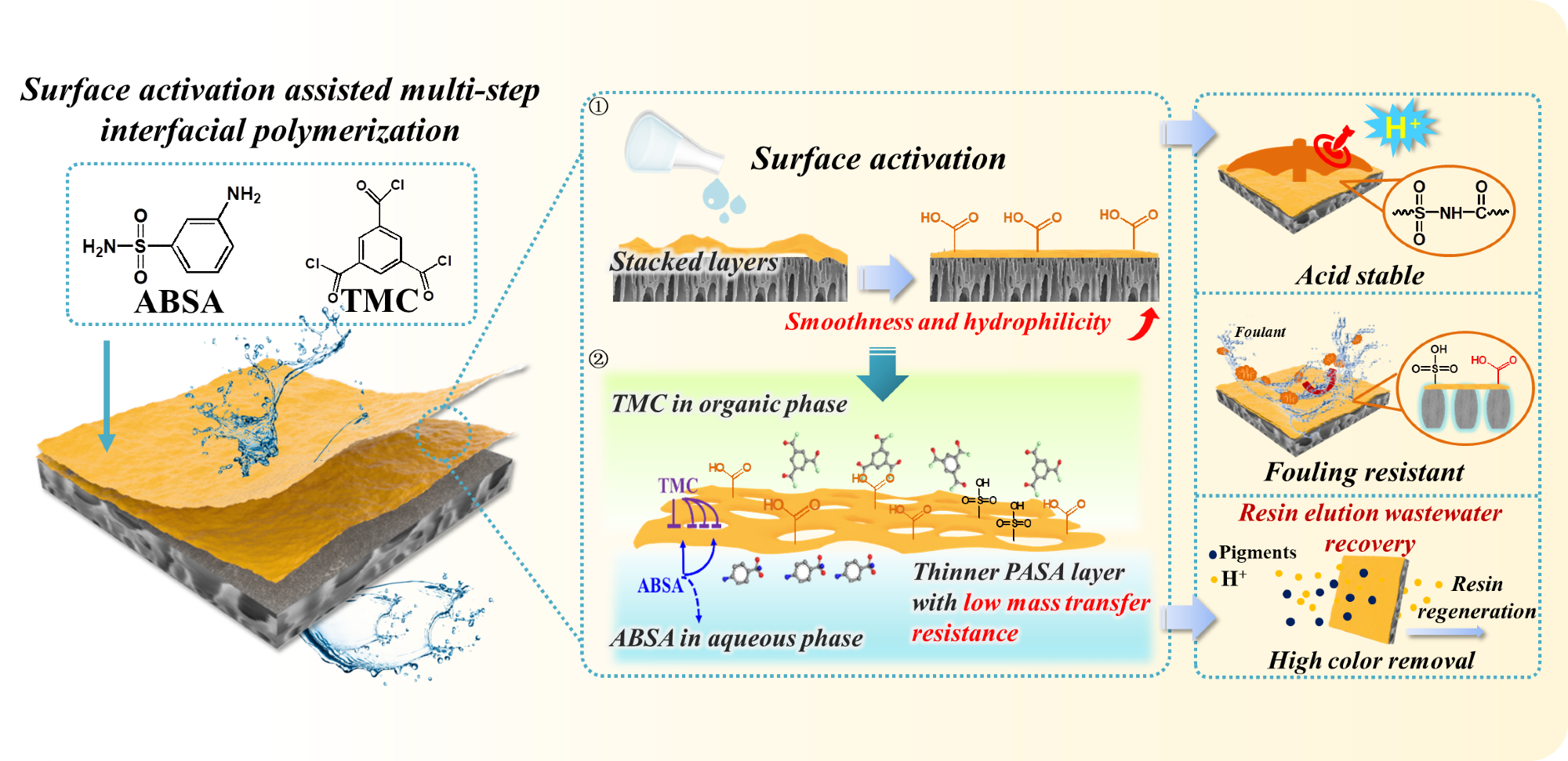Aug 26 2021Reviewed by Alex Smith
A team of scientists headed by Professor Yinhua Wan from the Institute of Process Engineering (IPE) of the Chinese Academy of Sciences created a novel highly permeable acid-resistant nanofiltration membrane for effective acidic wastewater treatment.
 Schematic mechanism of preparation of acid-resistant nanofiltration membrane and its superior separation performance. Image Credit: Cao yang.
Schematic mechanism of preparation of acid-resistant nanofiltration membrane and its superior separation performance. Image Credit: Cao yang.
The research was published on August 14th, 2021, in the Chemical Engineering Journal.
Nanofiltration (NF) is an eco-friendly and energy-efficient separation technique for the treatment of industrial wastewater. Yet, a majority of the polyamide NF membranes available in the market display low stability in highly acidic solutions. This is because of the hydrolysis of the amide linkage.
In the current research, the scientists developed an acid-resistant NF membrane with tunable separation layer properties on the basis of a simple surface activation-assisted, multi-phase interfacial polymerization (IP) process.
Using this strategy, a new cost-effective aqueous monomer (3-aminobenzenesulfonamide, ABSA) was employed to react with trimesoyl chloride (TMC) to create a poly(amide-sulfonamide) (PASA) intermediate layer, followed by surface activation and eventually fabricating a defective-free PASA top layer on the interlayer.
The stable sulfonamide structure of ABSA can hinder the direct attack of acid. Most significantly, with the increase of stacked PASA layers, the membrane displayed better continuity and greater selectivity, primarily because the greater amount of monomers can accelerate the IP process and inhibit the excessive reaction between ABSA and TMC.
As a result of the hydrolysis of the nascent PASA layer during the surface activation process, the activated PASA intermediate layer showed increased surface smoothness, electronegativity and hydrophilicity, which can support the subsequent IP reactions to develop a defect-free separation layer with greater permeability and salt rejections.
Exploiting the strong size exclusion effect, the membrane displayed desirable dye rejection under acidic conditions along with acceptable decolorization efficacy of the real resin elution wastewater. Furthermore, the membrane also exhibited exceptional acid resistance and satisfactory antifouling performance, as well as long-term stability.
This work provides a low-cost strategy to increase the permeability and antifouling ability of the acid-resistant NF membrane. It is promising to be applied in acidic wastewater treatment in textile and food processing industries.
Jianquan Luo, Study Corresponding Author and Professor, Institute of Process Engineering, Chinese Academy of Sciences
Journal Reference:
Cao, Y., et al. (2021) Highly permeable acid-resistant nanofiltration membrane based on a novel sulfonamide aqueous monomer for efficient acidic wastewater treatment. Chemical Engineering Journal. doi.org/10.1016/j.cej.2021.131791.
Source: https://english.cas.cn